Íslam og andstæður í íslensku miðaldasamfélagi.
Ártal:
Bls:
DOI:
Efnisorð:
Fyrir Íslendinga á miðöldum voru múslímar framandi heiðingjar og óvinir kristinnar trúar. Sú þekking á íslam sem lesa má úr íslenskum handritum var takmörkuð og mótsagnakennd og lítill greinarmunur var gerður á múslímum og öðrum heiðingjum. Sjálfsmynd Íslendinga á miðöldum var mótuð af kristinni trú og því eðlilegt að þær hugmyndir um „hina“ sem óhjákvæmilega fylgja sjálfsmynd hópa hafi tekið mið af afstöðu kristinnar kirkju gagnvart íslam. Kristileg algildishyggja vann þó einnig gegn mannamun, því heiðingjar gátu tekið kristni og orðið með því hluti af „okkur.“ Auk þess átti hið riddaralega gildismat með áherslu á göfugan uppruna þátt í að stuðla að gagnkvæmum skilningi og virðingu á milli kristinna manna og múslíma.
MEDIEVAL ICELANDIC CONTRADICTIONS REGARDING ISLAM
The rise of a new world religion proved traumatic for many medieval Christians. According to their doctrine, history spanned the story of fall and redemption, with the coming of Christ ushering in a new era. In a theological sense, Christ had assumed the burden of humanity’s sins, which had a historical counterpoint in the belief that this initiated the sixth and last era of human history. To many practitioners of history this meant that the finale had begun, and the main event in the last chapter would centre on the victory of Christianity, as it spread to pagan peoples until uniting the world under a single belief. The coming of Islam and the victories enjoyed by Muslims for several centuries dealt a blow to the confidence of Christian literati. Even though the rise of a new world religion did not directly violate biblical visions of the future, it had not been foretold, leaving Christian authors at a loss for explanations. Their discourse on Islam can be seen as typifying their world view as Christians, whereby Muslims constituted the important Other.
This study focuses on medieval Icelandic views about Muslims, keeping in mind that Iceland was one of the Latin Christian countries farthest removed from any actual Muslim threat. On the whole, Iceland demonstrated an interesting aspect of the complex relationship between Christian and non-Christian groups: there was little physical contact, so rather than being individuals who were encountered and experienced, Muslims were “imagined” constructions, distinct both in geography and religion. This study explores medieval images of Islam and the Muslims within Icelandic discourse, the attitudes of Icelandic religious and secular writers towards Islam and the creation and perpetuation of negative Muslim stereotypes. To discover the ideological purposes that such portrayals served, three kinds of medieval Christian and secular Icelandic sources — romances, theological tracts, and historiographical writings — are analysed for the images they constructed of the Muslim Other. These images are then positioned on three axes to help conceptualise the multi-faceted nature of alterity, in accordance with Tzvetan Todorov’s typology of knowing the Other. The images of Muslims in Icelandic historiography drew heavily on stereotypical Christian representations of Pagans. In a period when religion was an important identity marker, Muslims became the most significant Other in the worldview of Icelandic Christians. However, within the militant discourse of crusade narratives, there was also room for respecting brave, noble adversaries, who idealised the chivalric loyalty obliging a knight to keep his word and not betray his sworn faith. Such discourse might even present Muslim knights proving their nobility by refusing to accept Christianity, so that the Muslim images in learned Icelandic discourse could often become quite contradictory.

